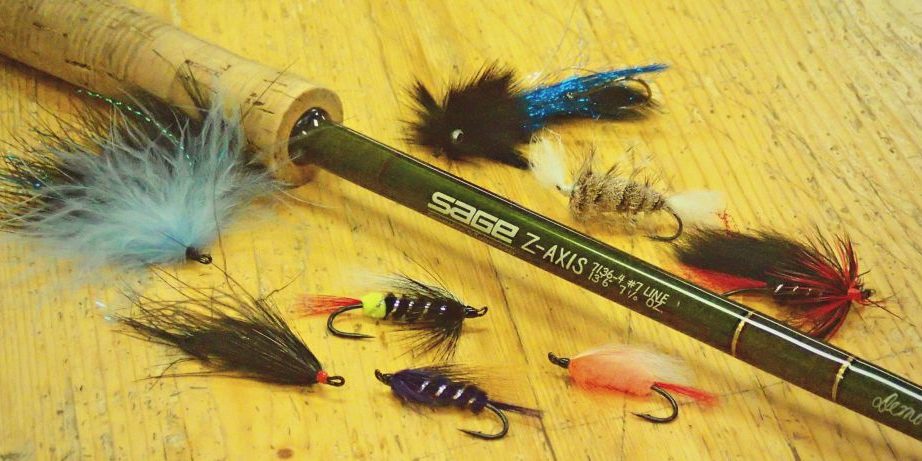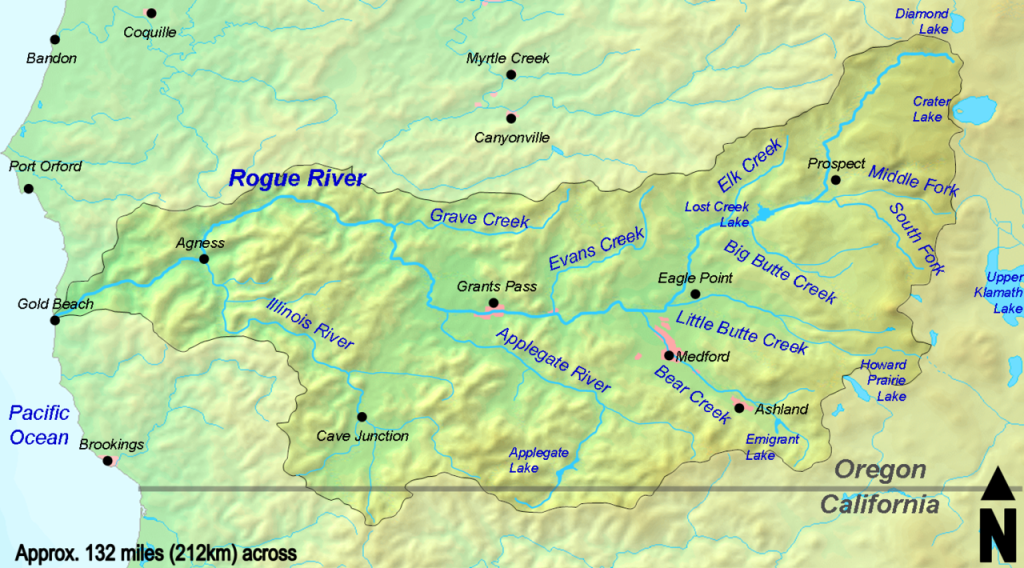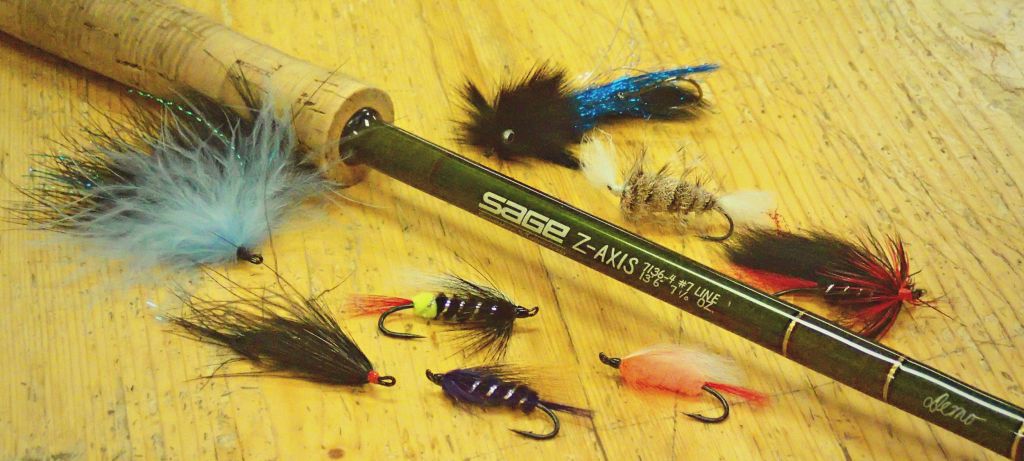A Beginners Journey Into Steelheading: An Introduction
Let me preface this right off by saying I am not a steelhead expert. Actually I know nothing about steelheading other than the fact that they are heralded as one of the top targets in this sport of fly fishing. In my my mind, steelhead are the untouchable species of gamefish left to the greatest and most patient anglers of our sport.
Now I know; I should know a little something about how to catch a steelhead, I do work at a fly shop after all. Being an Iowa boy transplanted to Colorado, I know very little. Well here is what I do know: I know what a spey rod is, steelhead swim up rivers from the ocean to spawn, a Green Butt Skunk is the ‘Elk Hair Caddis’ of the steelhead world, wild steelhead numbers are declining and need help, and these sea run rainbows fight extremely hard. I know this last fact from Youtube videos…deal with it. I do also know that switch rods are extremely fun for Colorado trout but I am still terrible at casting them.
Don’t get me wrong, the staff and guides at Duranglers know more about steelheading than most. After all; Duranglers owner’s Tom and John have been running yearly steelhead trips to the Babine River in BC for almost 30 years. Many of our guides spend their time off in the fall and winter on rivers like the Clearwater, Babine, Skeena, Deschutes, and McKenzie.
So what is the point of this? Well, due to schedules and vacations my family and I will be taking a trip to Oregon and camping on the Rogue River for a week. Here is something I learned: the Rogue River has steelhead. Yep. It has steelhead AND you can fish for them. Outstanding deduction, I know. Since I have this rare opportunity on the Rogue, I figured it was about time I spent some time learning the steelhead and spey game. Thankfully I have a lot of experienced anglers, guides, and gear reps who can help show me the ‘bropes‘.
So with my lack of knowledge and the resources of knowledge I have at my disposal, I figured it would be best to write down and chronicle all of these new discoveries…and what better place to write them down then the Duranglers blog. Hopefully my discoveries and lessons of the spey will help other beginning and aspiring steelhead and spey anglers. Hopefully we can discover that getting into the game isn’t as hard or scary as I make up in my head that it is.
This will be an ongoing blog series for the next few months culminating in my trip to the Rogue River where I will put all my new found knowledge to the test.
Again, please note that I consider myself an absolute beginner. I will however be seeking advice and knowledge from the spey sages around me and will put their lessons into blog format here. A few of the things I will seek divine wisdom on are:
- • Gear (rods, reels, line)
- • Flies (and tying)
- • Setting up terminal tackle
- • Locating fish
- • Spey casting
- • Techniques (Swinging, skating, nymphing, etc.)
- • Steelhead themselves and learning the differences between a summer and winter steelhead…among other things.
- • Anything else that comes along
So, if you have been interested in steelhead fishing, keep an eye on this space. I will be posting frequent updates on all the things I will be learning. If you consider yourself an expert steelheader (or even a novice) and there is something you feel I should cover, or you disagree with something I have said; please comment below or on the upcoming blogs. You can also shoot me an e-mail with any information you wish at [email protected] and I will get it put up for the novices like myself.
I look forward to taking this journey with you. We will probably laugh, we will probably cry, we may even get angry at one another; but hopefully in the end it will be just like a feel good episode of 7th Heaven or some Oxygen network tv show with us having learned a valuable lesson. Hopefully that lesson is some chrome in hand.
-Andy McKinley












If you haven’t already, read this book:
http://www.amazon.com/Steelhead-Fly-Fishing-Trey-Combs/dp/1558211195/ref=sr_1_2?ie=UTF8&qid=1407814555&sr=8-2&keywords=trey+combs
Trey’s book contains a wonderful chapter on the Rogue and will give you a sense of the history and the fishing on that river, among many others. You can read bits and pieces of it on Google Books, but you really should buy the book.
Then read this book:
http://www.amazon.com/Steelheaders-Way-Principles-Tactics-Techniques/dp/0979346061/ref=sr_1_1?ie=UTF8&qid=1407814600&sr=8-1&keywords=lani+waller
If you can find it, read this one too:
http://www.amazon.com/A-Passion-Steelhead-Masters-Fly/dp/0974642711/ref=sr_1_1?ie=UTF8&qid=1407816516&sr=8-1&keywords=dec+hogan
Lani Waller’s steelhead fishing instructional videos produced by 3M/Scientific Anglers in the mid-80s are still full of the best instructional material out there as far as steelhead are concerned. In the initial videos some of the equipment he specifies are relics of an era come and gone (calling on the phone to get streamflows!), but all the advice applies today. The videos were recently remastered and released as a DVD set:
http://www.amazon.com/Lani-Wallers-Steelhead-Legacy-Hour/dp/B0053THFXI
Educate yourself about the differences between wild steelhead and hatchery steelhead and how/why it matters.
4 and 5 inch long articulated flies are not the be all end all of steelhead flies.
Since you are new to the two-handed casting game…you don’t need to be able to cast 120 feet. It’s nice to have it in your quiver, but most guys with two-handed rods try to cast too far – usually there are a lot of negatives to this that most of us have learned through time on the water. There is no point in casting and swinging through worthless water just to cast as far as you possibly can. I could lay it all out here, but read this instead: http://www.ginkandgasoline.com/spey-casting-2/speyitis/
*Let your fly swing all the way in*
If you are hanging up on the bottom every single swing, you aren’t fishing effectively. Lighten your fly or tip to where you can swing all the way into the hang down and not have to winch your fly and tip off the bottom every time (assuming you are fishing tips).
Figure out whether you want to carry a soft loop or not…I tend to not use them for summer fish. I simply swing a direct connection to the reel and either set a light drag (with disc drags) or just let it rip with a click/pawl reel. When the fish are aggressive and not plucky I think you actually get better hookups this way, although many people will probably argue that. When swinging for winter fish in slower water, I will sometimes carry a very small loop, but never anything bigger than 6 inches or so. I’ve seen some folks running crazy soft loops of 2 feet or more and it just doesn’t make sense to me.
If you should encounter a wild fish, consider not removing it from the water. There are a lot of great options for “glory shots” with the fish still in the water, or at least with head and gills submerged. In fact, just to the north of where you’ll be, in Washington state, it is illegal to remove a wild steelhead from the water.
Hey Ben,
Thanks for the comment. That is some really great info and I will certainly check out the books; the Trey Combs book looks really awesome. After a handful of discussions with our local steelhead junkies around here, it seems that having a good spey cast is very helpful…but you don’t need a great spey cast. A lot of them tell me that many of their fish have been caught anywhere from 8-20 feet from the bank. Thanks for the tip about removing the fish from the water as well, that is something I really did not consider and will absolutely keep in mind.
-Andy
The descriptions/diagrams of the various presentations in Trey Combs’ book are also the most descriptive I’ve found and you should definitely study the ones you’ll be using. Much of it is written for single handed rods (the book was published as the two handed rod was just coming to serious use in the NW) but it all applies to two handers as well. The chapters on equipment are somewhat dated, but kind of fun to read and look back on what used to be considered cutting edge.
I’d say the majority of steelhead I’ve hooked have been less than 60 feet away…it’s much easier to present a controlled swing at those distances as well. You will also want to explore the various options as far as running lines are concerned. If you are planning on fishing a Scandi or Skagit head, I would suggest simply buying the head and then finding the running line you prefer (I’m not sure Rio/Airflo/SA even sell the combined head/running line anymore). I prefer to simply use Amnesia mono as my running line…it’s cheap, shoots well, and is durable. A lot of new casters like the fly line type running lines as they are less prone to tangle when holding loops for shooting.
Many steelhead are hooked on the hang down…which means your fly is basically parallel to the current and directly downstream of you….which generally fits the 8-20 foot range you’ve been given. The fish are either holding in that water (common) or followed the fly from farther out and haven’t committed to it. The downside of that, is that it can be extremely difficult to get a good hook set in that situation. As in trout fishing, you cannot ignore the water close to you…I usually start with half of my head out when I’m prospecting water I’m not familiar with and continue increasing that by about 3 feet each cast (depending on water clarity). In particular runs where I am 100% certain of where the bucket is and I’m pressed for time I will violate that rule at times, but it applies most of the time.
Your biggest concern as a new caster should be to become proficient in 4 casts…river left upstream/downstream anchor casts, and river right upstream/downstream anchor casts. Choose the ones that work best for you and master them until you find the maximum distance at which you can make a cast that lays out properly (which means no major pileup at the end). Many new steelheaders will try to push their casts, lose energy at the terminal end about 75% of the way out, and the cast will pile up and die, making it much harder to set up a controlled swing…you want to avoid that. Most new casters find the Snap-T/C cast to be easiest, since the anchor placement is generally correct once you get the snap down.
As far as casting goes…when things go downhill just force yourself to slow down every aspect of the cast. A lot of times the problem will correct itself if you just ease off the gas.
Again Ben, thank you so much for the information and advice. After your book recommendations I scoured the Duranglers book archives and actually found 2 Trey Combs books on Steelheading. The first being your recommendation of Steelhead Fly Fishing. The second being Steelhead Fly Fishing and Fly Tying.
http://www.amazon.com/Steelhead-Fishing-Flies-Trey-Combs/dp/093660803X
These books may be dated, but they are extremely helpful (not to mention fascinating in learning about the history of steelhead fishing on different rivers). The Zane Grey story on floating the Rogue was really cool. Now to work on casting. I have a 5 wt Redington Dually switch rod that I am going to be able to practice my casts here on our local Animas River. Thank you so much again for all the tips and advice. I hope you don’t mind if I cite you in future blog posts.
-Andy
This is a very big help for a rookie like me. Thanks for sharing this. I look forward to reading more posts from you.
Someone has to say it, may as well be me. Think long and hard about whether you want to hook into your first steelhead!
Have you read Harry Middleton’s wonderful somewhat-fictionalized memoir, “The Earth is Enough”, do you remember the part where he asks his elders to teach him to flyfish and he gets hit with an explosive tirade that scares the crap out of him? I’ll paraphrase the tirade for you in case you haven’t read it: Teach you to flyfish! What, are you crazy! If we teach you to flyfish, your life will be ruined!
You work in a flyshop. You know how true those words are. From what I’ve seen, heroin is less addicting than flyfishing. And if you hang a steelhead, god forbid, your life will be pretty much over.
Think about taking up serious drinking or betting on the ponies. You’ll be better off in the long run.
Tom and John made it possible for me to fish the Babine around 20 years ago. I’d caught a few lovely steelies in the Campbell and the Quinsam on Vancouver Island before that. I was already hooked, but the Babine was a life changer. I still wake up with cold sweats from a huge buck that hooked me in Corner. He had me on long enough for me to have read “War and Peace” before he jumped clear of the water right in my face. I watched my Babine Bitch fall free from his jaw and felt the line go limp.
I sat down and wept. Right there. On the bank. In front of God and the grizzlies.
When friends come to visit, I don’t show them pictures of my grandchildren like any decent grandfather would. I show them a photo Pierce took of me with a beautiful hen I landed in Gravel Bar.
I haven’t been able to get up to the Northwest for quite a while. My trout boxes need restocking. What do these two things have to do with each other? I’ll tell you. I should be tying trout flies. Am I? No. I’m tying steelhead flies for trips I dream of making when I can leave town again. How many dozen steelhead flies do I have? 30? 40? 50? Damn if I know. It would take a week to count them.
Turn back, I beg you, before it’s too late.
Andy- As Mr. Meyers eluded to, don’t do it!